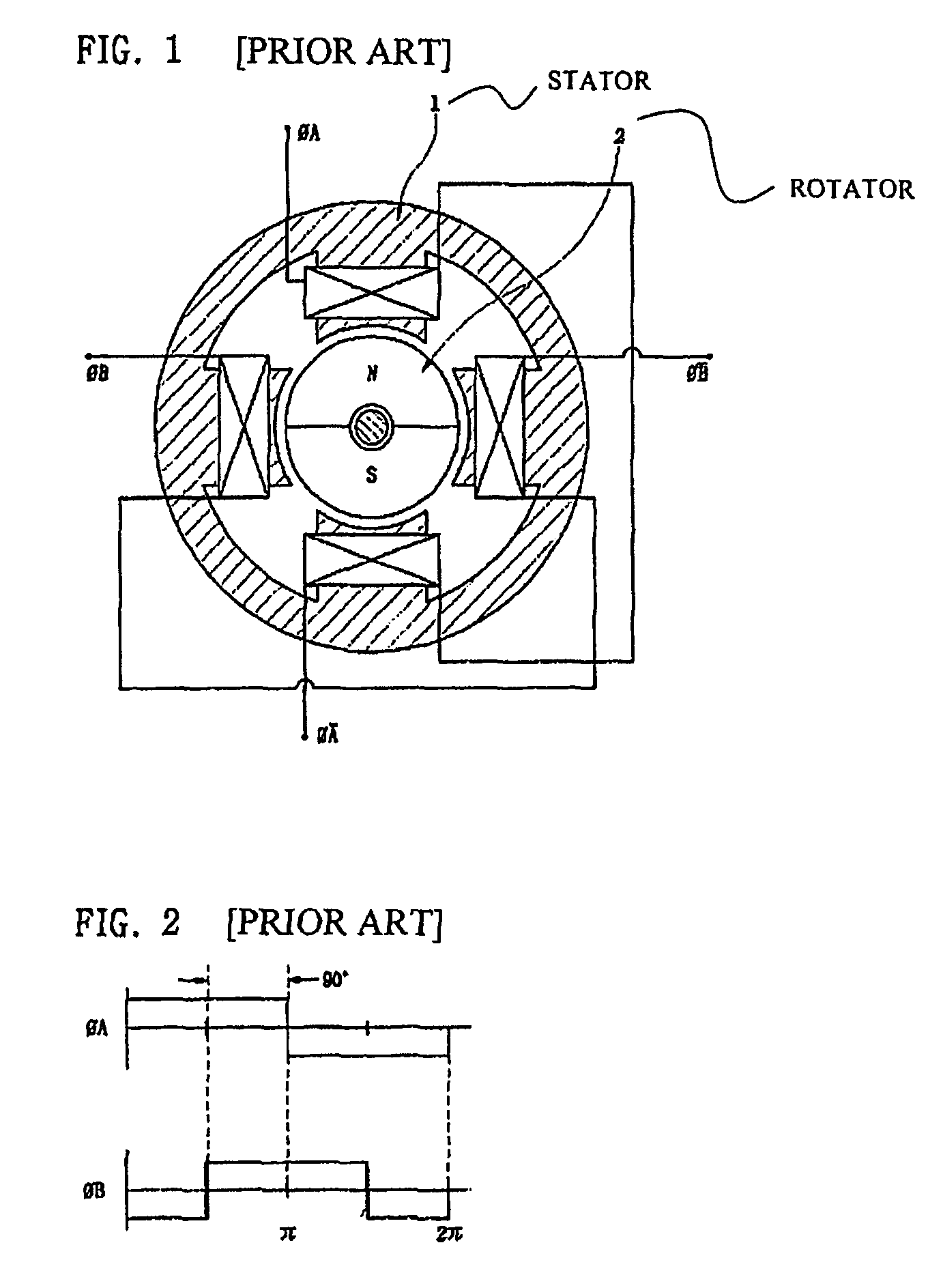Two-phase brushless DC motor
a brushless dc motor and two-phase technology, applied in the direction of motor/generator/converter stopper, dynamo-electric converter control, etc., can solve the problems of small permeance coefficient, low utilization efficiency of magnetic energy, and inability to adapt to a large-scale motor, so as to reduce copper loss and production cost, minimizing cogging, and minimizing the windings of the stator
- Summary
- Abstract
- Description
- Claims
- Application Information
AI Technical Summary
Benefits of technology
Problems solved by technology
Method used
Image
Examples
Embodiment Construction
[0037]Reference will now be made in detail to the embodiments of the present invention, examples of which are illustrated in the accompanying drawings, wherein like reference numerals refer to the like elements throughout. The embodiments are described below to explain the present invention by referring to the figures.
[0038]According to the present invention, there is provided a brushless motor fabricated by including a stator having 4×n poles and a permanent magnet rotor having 6×n poles, based on a motor constitution combined by a two-phase winding stator provided with four winding poles and a permanent magnet rotor provided with six poles divided into 60 divided degrees.
[0039]From now on, the constitution and action of the present invention will be described in detail in connection with FIGS. 5 to 7 showing the exemplary brushless motor including four poles stator windings and six poles rotor poles (4S6R) according to an aspect of the present invention.
[0040]As shown in FIG. 5, t...
PUM
 Login to View More
Login to View More Abstract
Description
Claims
Application Information
 Login to View More
Login to View More - R&D
- Intellectual Property
- Life Sciences
- Materials
- Tech Scout
- Unparalleled Data Quality
- Higher Quality Content
- 60% Fewer Hallucinations
Browse by: Latest US Patents, China's latest patents, Technical Efficacy Thesaurus, Application Domain, Technology Topic, Popular Technical Reports.
© 2025 PatSnap. All rights reserved.Legal|Privacy policy|Modern Slavery Act Transparency Statement|Sitemap|About US| Contact US: help@patsnap.com



